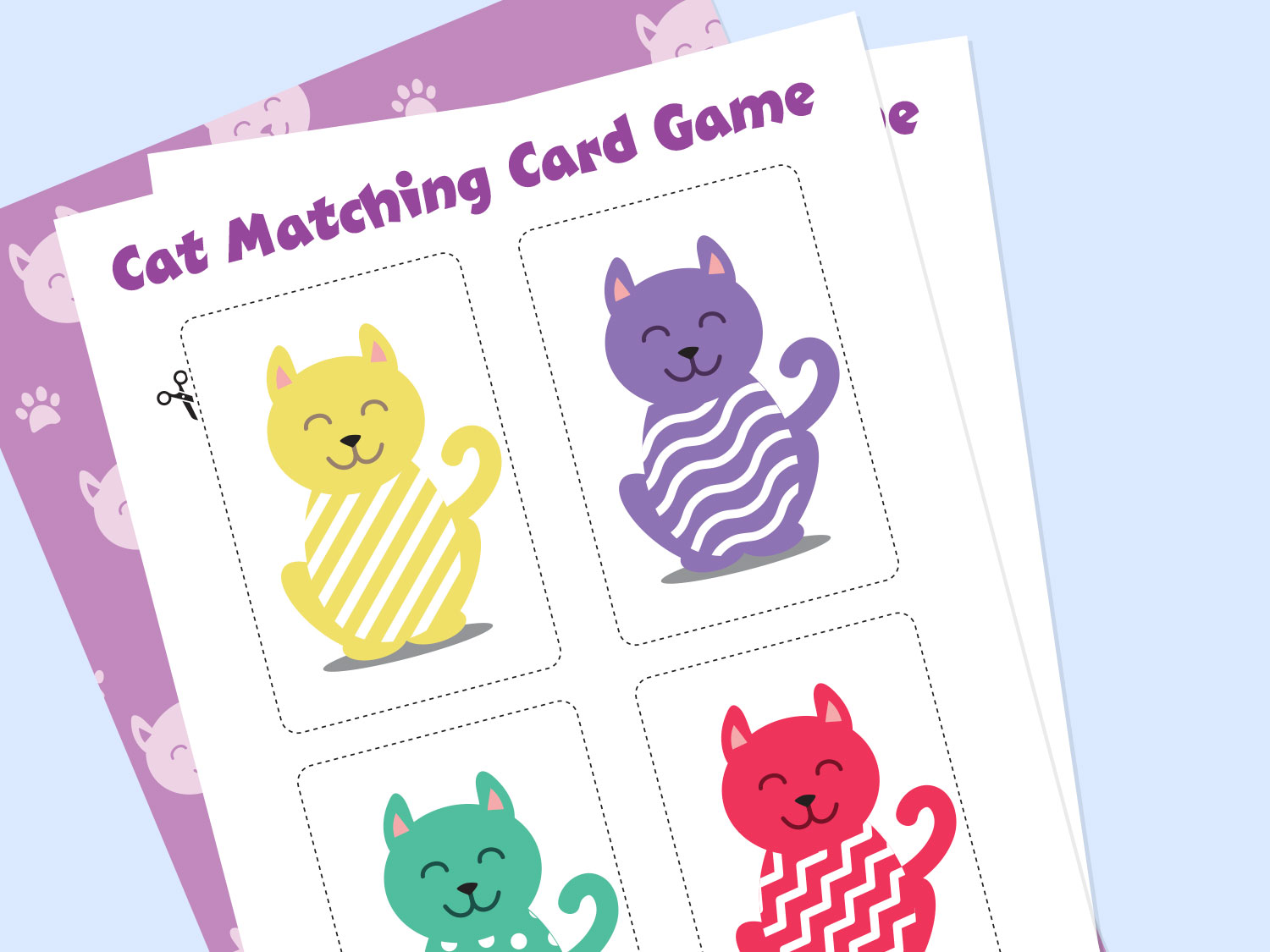My girls love playing games — both board games and card games. I love that games help them to develop so many thinking, language, and social skills. As children play games they count, match, sort, and sequence; they solve problems and learn to make strategic choices. They develop a more extensive vocabulary, and they learn to wait and take turns. Over time, children even master how to be a gracious winner and loser, which is a tricky lesson to learn!
The simplest games for kids to play are memory-style matching games, like the Cat Matching Card Game I’m sharing today. This set of printable cards includes eight patterned cat designs, and it’s perfect for introducing game time to older toddlers and preschoolers.
Download and Print Cat Matching Game Cards
Download the PDF containing the matching cards and a patterned backing sheet, which you can use on the back of your cards if you'd like. Tip: When printing, select “Fit to printable area” (or similar) to ensure the page fits with your printer type and paper size. I suggest printing your cards onto cardstock (I use a thick, matte photo printing paper) and laminating or covering with clear, self-adhesive book covering for greater durability.
For the first game, Memory Match, you'll need two identical sets of matching cards. For Snap!, you'll need four sets of matching cards.
Once your cards are prepared, it’s time to play!
Game #1: How to Play Memory Match
Memory can be played solo or with a friend. Before starting, lay all of the cards face down on the table top.
Turn over two cards (take turns if more than one person is playing). If the two cards are an identical match, the player keeps the pair and takes another turn. If they don’t match, the cards are both turned back over again (returned to the same place). Players need to watch carefully in order to track where the matching pairs are hiding.
The game ends when all of the pairs have been found. The player with the most pairs is the winner.
MORE: Cuddly Kittens Free Coloring Page
Game #2: How to Play Snap!
Before playing, shuffle the cards and divide the deck equally between the number of players. Each player places their stack of cards face down in front of them.
Players take turns (moving clockwise) to take a card off the top of their pile, placing it face up onto a stack in the middle.
If the last two cards played match, slap your hand on them and yell “SNAP!” The first person to slap and snap "wins" the pile of cards. They add the cards won to the bottom of their own collection of playing cards.
Play begins again when the winner of the round puts a card face up in the middle.
The faster the cards are placed onto the center stack, the more challenging the game is. Players must not look at the card they are adding before placing it onto the center stack.
The game ends when one player accumulates all of the playing cards.
MORE: Love Cats? Share the Pete the Cat Series
Learning Hints & Tips
Make the most of your time playing together by talking with your child as you play. You might focus on:
- Developing color vocabulary: Invite your child to name the color of each cat as she selects a card.
- Developing pattern awareness and vocabulary: Introduce your child to the four patterns included on the game cards and invite him to name each pattern as he selects a card.
- Taking turns: Help reinforce the concept of taking turns by thinking aloud as you play. You might say, “Now that you've had your turn, it’s my turn to choose a card.”
- Counting: At the end of a round of memory match, count the cards that each person has collected during the game.
When game time’s over, continue the cat-themed fun by reading one of our top cat character picture book picks!





